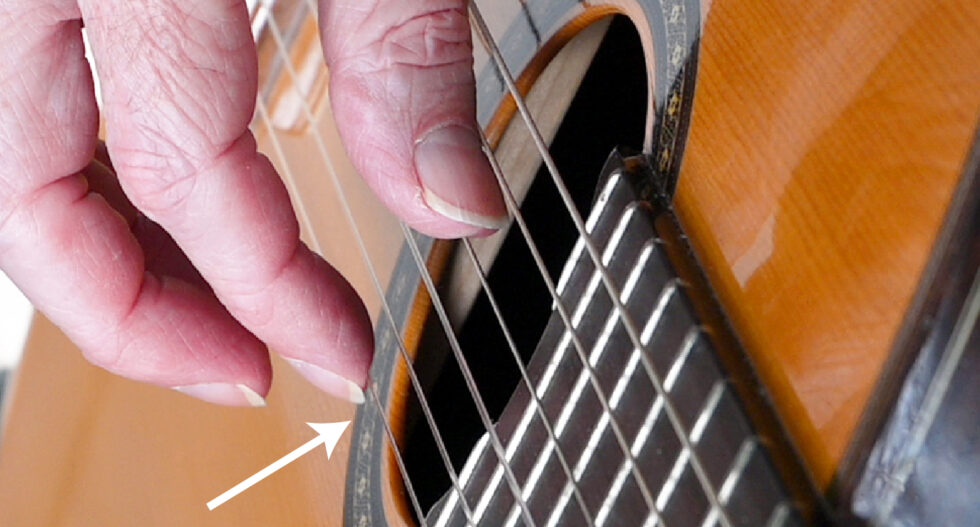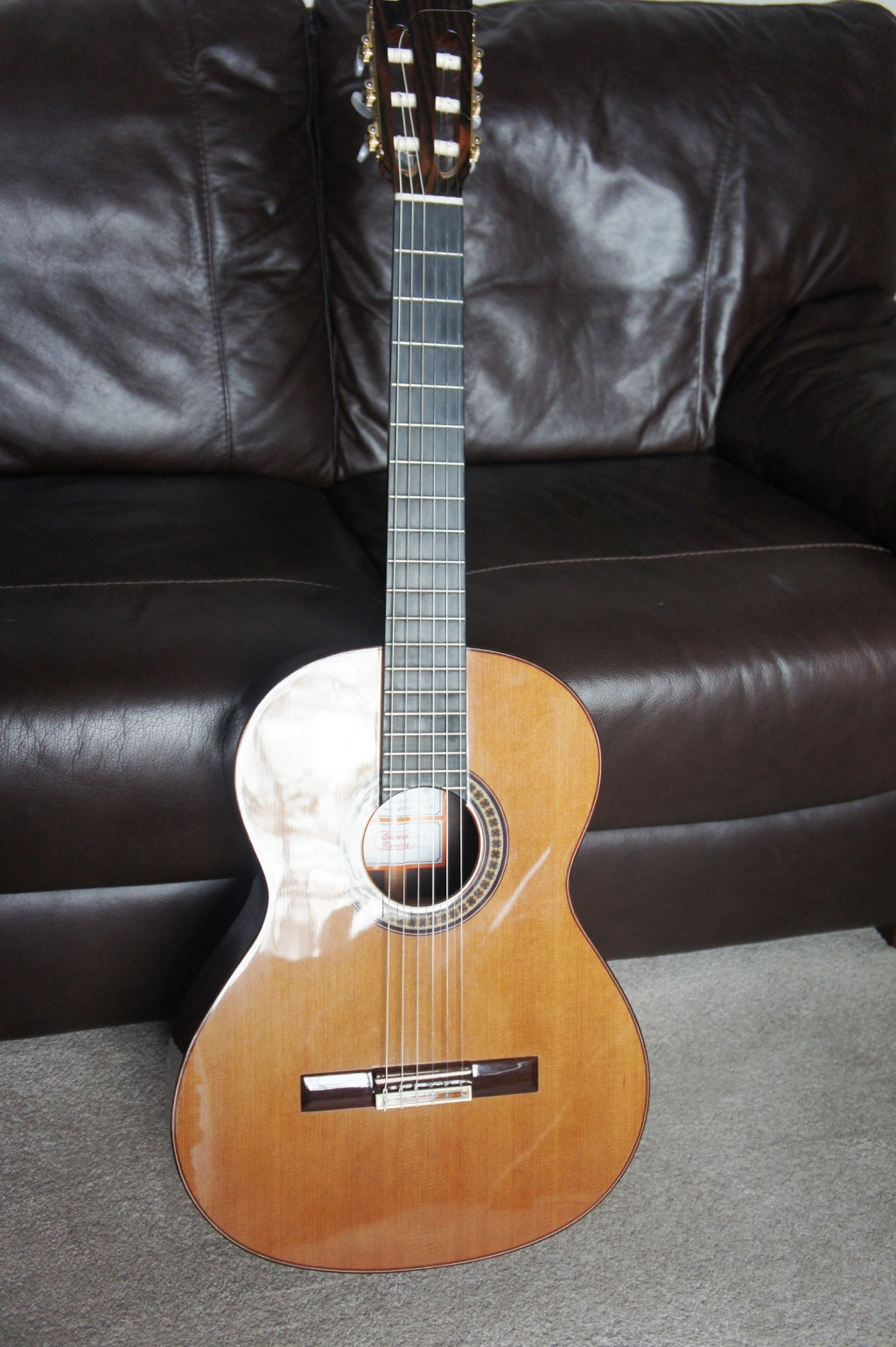
Classical Guitar Technique Collapsible joint rest stroke, Part 2 YouTube
Rest Stroke Technique on the Classical Guitar. The rest stroke, also known as apoyando, produces a full and powerful sound, and differs from the free stroke in its follow through. Whereas the free stroke moves the finger through the air, clearing the adjacent string, the rest stroke moves through the string and then rests on the adjacent string.

Classical Guitar Lesson Basics / Rest Strokes up close YouTube
Apoyando (also known as Free Stroke) is an important classical guitar technique. Learn the positioning and technique for Apoyando in this lesson.

How to Play Classical Guitar 10 Essential Tips Kalymi Music Center
View more @ http://www.freeguitarvideos.com/classical/free-rest-stroke.htmlThis beginner lesson for classical guitar will show you the two main types of stro.
Do classical guitars sound different than acoustic guitars? How so? Quora
Playing the guitar with the right hand involves two types of strokes: the free stroke and the rest stroke. In free stroke the finger plays the string and then flies free. In rest stroke the finger plays a string and lands on the string behind it coming to rest on that string. The strokes are produced in the same way, the only difference is the.

Tips for Guitar Ensemble
Free Shipping Available. Buy Classical Guitar Rest on ebay. Money Back Guarantee!

Right hand guitar technique alternating rest stroke YouTube
Watch me demonstrate rest stroke follow-through on a scale in video clip #5. When you play any passage rest stroke, watch your fingers very closely. Observe the follow-through of each finger. Make certain each finger "sticks" on the adjacent string until the other alternating finger executes its rest stroke. Rest stroke follow-through will make.

GUITARLIFT Mediano
In classical guitar, a rest stroke is where the finger plucks a string (say the D string) and comes to rest on the adjacent string (in this case, the A string). Obviously this term applies to fingerstyle upstrokes, but if we steal it and apply this to our use of a guitar pick, a down stroke on the A string would see your pick coming to a halt.

Learn To Play Classical Guitar on the App Store
Rest stroke. A rest stroke by the thumb produces a deep, full, and loud sound. These qualities will be useful to bring out bass lines in classical guitar repertoire and it is a valuable tool to add to your technique. The idea is essentially the same as with the fingers; the thumb passes through the string and rests on the string below.

Classical guitar leg rest
Q&A Lesson: Rest Stroke (Apoyando) and Free Stroke (Tirando) on Classical Guitar Visit my Support Page: https://www.thisisclassicalguitar.com/donate-support.

Classical Guitar Rest Stroke Finger Alternation Exercise Short YouTube
In a parallel thread, forum member danungar posted a question regarding the potential of free vs. rest stroke as regards speed in particular. Mark Gaultier then suggested to open a new topic to discuss the issue, which I'm doing here.. ↳ Classical Guitar Concerts, Competitions and Conventions; ↳ Classical Guitar Concerts U.S.A. ↳.

Classical Guitar Lessons Online The Battle of Rest Stroke Vs Free
Moving between the arpeggio hand position and rest stroke scale hand position can create problems for novice players. Read more about avoiding rest strokes here. Classical Guitar Technique. To learn to play classical guitar scales (the right hand technique), first work on the movements off the guitar. You can do these in the air in a.

The Basics of Classical Guitar and Rest Stroke hubpages
On the way down, shift back to second position by smoothly gliding your third finger along the 3rd string, down to the fourth fret. Alternate between i (index finger) and m (middle finger) as you go. For the sake of speed and accuracy, alternating between two right-hand fingers (usually i and m) is customary for playing classical-guitar melodies.

How To Play with Apoyando Technique (Rest Stroke)
Arpeggios make up 80%+ of all classical guitar music. Rest strokes are most commonly used for scales and isolated melodic lines, so we must master both rest strokes AND free strokes to have the tools to play pieces of music. When we incorporate them into arpeggio patterns in order to bring out a melody note, immense care must be taken to.

Beginning Classical guitar, setting up right hand rest stroke YouTube
David Stevenson explains the difference between the rest stroke and the free stroke in classical guitar playing, with a demonstration of each. Enjoy! Love G.

Rest Stroke vs Free stroke Keys to Good Tone Classical Guitar Editions
00:00 - Intro & Advice. 2:01 - Position and movement for rest & free Stroke. 7:51 - When to use rest stroke, forte playing, indications. 13:48 - Sagreras, arpeggio rest stroke, melody accents. 16:14 - Rest stroke with the thumb, exercises. 19:40 - Single finger repeated rest stroke, tone.

Classical Guitar Technique Collapsible Joint Rest Stroke Part 3 YouTube
Free PDF Method Book: https://www.thisisclassicalguitar.com/free-classical-guitar-method-book-pdf/More Lessons: https://www.thisisclassicalguitar.com/lessons.